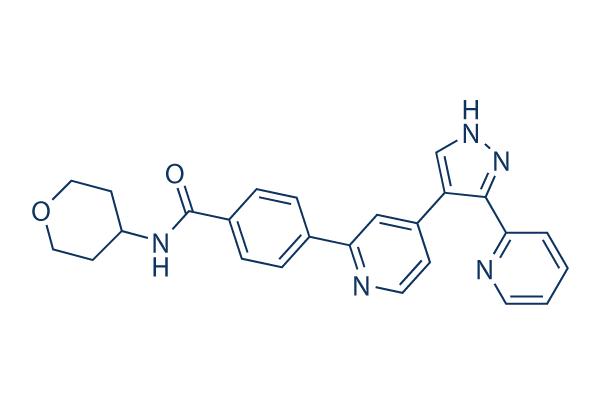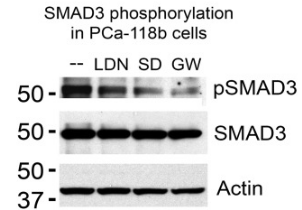
- Bioactive Compounds
- By Signaling Pathways
- PI3K/Akt/mTOR
- Epigenetics
- Methylation
- Immunology & Inflammation
- Protein Tyrosine Kinase
- Angiogenesis
- Apoptosis
- Autophagy
- ER stress & UPR
- JAK/STAT
- MAPK
- Cytoskeletal Signaling
- Cell Cycle
- TGF-beta/Smad
- DNA Damage/DNA Repair
- Compound Libraries
- Popular Compound Libraries
- Customize Library
- Clinical and FDA-approved Related
- Bioactive Compound Libraries
- Inhibitor Related
- Natural Product Related
- Metabolism Related
- Cell Death Related
- By Signaling Pathway
- By Disease
- Anti-infection and Antiviral Related
- Neuronal and Immunology Related
- Fragment and Covalent Related
- FDA-approved Drug Library
- FDA-approved & Passed Phase I Drug Library
- Preclinical/Clinical Compound Library
- Bioactive Compound Library-I
- Bioactive Compound Library-Ⅱ
- Kinase Inhibitor Library
- Express-Pick Library
- Natural Product Library
- Human Endogenous Metabolite Compound Library
- Alkaloid Compound LibraryNew
- Angiogenesis Related compound Library
- Anti-Aging Compound Library
- Anti-alzheimer Disease Compound Library
- Antibiotics compound Library
- Anti-cancer Compound Library
- Anti-cancer Compound Library-Ⅱ
- Anti-cancer Metabolism Compound Library
- Anti-Cardiovascular Disease Compound Library
- Anti-diabetic Compound Library
- Anti-infection Compound Library
- Antioxidant Compound Library
- Anti-parasitic Compound Library
- Antiviral Compound Library
- Apoptosis Compound Library
- Autophagy Compound Library
- Calcium Channel Blocker LibraryNew
- Cambridge Cancer Compound Library
- Carbohydrate Metabolism Compound LibraryNew
- Cell Cycle compound library
- CNS-Penetrant Compound Library
- Covalent Inhibitor Library
- Cytokine Inhibitor LibraryNew
- Cytoskeletal Signaling Pathway Compound Library
- DNA Damage/DNA Repair compound Library
- Drug-like Compound Library
- Endoplasmic Reticulum Stress Compound Library
- Epigenetics Compound Library
- Exosome Secretion Related Compound LibraryNew
- FDA-approved Anticancer Drug LibraryNew
- Ferroptosis Compound Library
- Flavonoid Compound Library
- Fragment Library
- Glutamine Metabolism Compound Library
- Glycolysis Compound Library
- GPCR Compound Library
- Gut Microbial Metabolite Library
- HIF-1 Signaling Pathway Compound Library
- Highly Selective Inhibitor Library
- Histone modification compound library
- HTS Library for Drug Discovery
- Human Hormone Related Compound LibraryNew
- Human Transcription Factor Compound LibraryNew
- Immunology/Inflammation Compound Library
- Inhibitor Library
- Ion Channel Ligand Library
- JAK/STAT compound library
- Lipid Metabolism Compound LibraryNew
- Macrocyclic Compound Library
- MAPK Inhibitor Library
- Medicine Food Homology Compound Library
- Metabolism Compound Library
- Methylation Compound Library
- Mouse Metabolite Compound LibraryNew
- Natural Organic Compound Library
- Neuronal Signaling Compound Library
- NF-κB Signaling Compound Library
- Nucleoside Analogue Library
- Obesity Compound Library
- Oxidative Stress Compound LibraryNew
- Plant Extract Library
- Phenotypic Screening Library
- PI3K/Akt Inhibitor Library
- Protease Inhibitor Library
- Protein-protein Interaction Inhibitor Library
- Pyroptosis Compound Library
- Small Molecule Immuno-Oncology Compound Library
- Mitochondria-Targeted Compound LibraryNew
- Stem Cell Differentiation Compound LibraryNew
- Stem Cell Signaling Compound Library
- Natural Phenol Compound LibraryNew
- Natural Terpenoid Compound LibraryNew
- TGF-beta/Smad compound library
- Traditional Chinese Medicine Library
- Tyrosine Kinase Inhibitor Library
- Ubiquitination Compound Library
-
Cherry Picking
You can personalize your library with chemicals from within Selleck's inventory. Build the right library for your research endeavors by choosing from compounds in all of our available libraries.
Please contact us at info@selleckchem.com to customize your library.
You could select:
- Antibodies
- Bioreagents
- qPCR
- 2x SYBR Green qPCR Master Mix
- 2x SYBR Green qPCR Master Mix(Low ROX)
- 2x SYBR Green qPCR Master Mix(High ROX)
- Protein Assay
- Protein A/G Magnetic Beads for IP
- Anti-Flag magnetic beads
- Anti-Flag Affinity Gel
- Anti-Myc magnetic beads
- Anti-HA magnetic beads
- Poly DYKDDDDK Tag Peptide lyophilized powder
- Protease Inhibitor Cocktail
- Protease Inhibitor Cocktail (EDTA-Free, 100X in DMSO)
- Phosphatase Inhibitor Cocktail (2 Tubes, 100X)
- Cell Biology
- Cell Counting Kit-8 (CCK-8)
- Animal Experiment
- Mouse Direct PCR Kit (For Genotyping)
- New Products
- Contact Us
research use only
GW788388 TGF-beta/Smad inhibitor
GW788388 is a potent and selective inhibitor of ALK5 with IC50 of 18 nM in a cell-free assay, also inhibits TGF-β type II receptor and activin type II receptor activities, but does not inhibit BMP type II receptor.

Chemical Structure
Molecular Weight: 425.48
Purity & Quality Control
Batch:
Purity:
99.99%
99.99
Related Products
| Related Targets | ALK1 ALK2 ALK3 ALK4 TGFβRI/ALK5 ALK6 TGFβRII TGF-β Smad3 Smad4 Smad5 ALK7 | Click to Expand |
|---|---|---|
| Related Products | SB431542 LDN-193189 Galunisertib (LY2157299) LY2109761 SB525334 LDN-193189 Dihydrochloride SIS3 HCl RepSox (E-616452) LY364947 DMH1 SB505124 A-83-01 SD-208 K02288 Vactosertib (TEW-7197) SIS3 Kartogenin ITD-1 LDN-212854 LY 3200882 | Click to Expand |
| Related Compound Libraries | Kinase Inhibitor Library PI3K/Akt Inhibitor Library MAPK Inhibitor Library Cell Cycle compound library TGF-beta/Smad compound library | Click to Expand |
Signaling Pathway
Cell Culture and Working Concentration
| Cell Lines | Assay Type | Concentration | Incubation Time | Formulation | Activity Description | PMID |
|---|---|---|---|---|---|---|
| HepG2 cells | Function assay | Inhibition of TGF beta-induced transcription of firefly luciferase reporter gene in HepG2 cells, IC50=0.093 μM | ||||
| HEK293 cells | Function assay | Inhibition of TGF-beta1 signaling in human HEK293 cells transfected with luciferase and FAST-2 gene expression vector A3-LUX after 16 hrs by luciferase reporter gene assay, IC50=0.446 μM | ||||
| Click to View More Cell Line Experimental Data | ||||||
Mechanism of Action
| Targets |
|
|---|
In vitro |
||||
| In vitro | GW788388 shows anti-TGF-β activity with IC50 of 93 nM in cellular assay. [1] This compound shows some inhibitory to activin type II receptor (ActRII) but no inhibitory to bone morphogenic protein (BMP) type II receptor. It shows no toxicity in Namru murine mammary gland (NMuMG), MDA-MB-231, renal cell carcinoma (RCC)4, and U2OS cells at 4 nM to 15 μM. It blocks TGF-β-induced Smad activation and target gene expression, while decreasing epithelial-mesenchymal transitions and fibrogenesis. This chemical inhibits ALK5, ALK4, ALK7 and TGF-β-mediated growth arrest. [2] | |||
|---|---|---|---|---|
| Kinase Assay | ALK5 Fluorescence Polarization Binding Assay | |||
| GW788388 binding to ALK5 is tested on purified recombinant GST−ALK5 (residues 198-503). Displacement of rhodamine green fluorescently labeled ATP competitive inhibitor by different concentrations of this compound is used to calculate a binding pIC50. GST−ALK5 is added to a buffer containing 62.5 mM N-(2-hydroxyethyl)piperazine-N'-2-ethanesulfonic acid (Hepes), pH 7.5, 1 mM dithiothreitol (DTT), 12.5 mM MgCl2, 1.25 mM 3-[(3-cholamidopropyl)dimethylammonio]-1-propanesulfonic acid (CHAPS), and 1 nM rhodamine green-labeled ligand so that the final ALK5 concentration is 10 nM based on active-site titration of the enzyme. The enzyme/ligand reagent (40 μL) is added to 384-well assay plates containing 1 μL of different concentrations of this chemical. The plates are read immediately on a LJL Acquest fluorescence reader with excitation, emission, and dichroic filters of 485, 530, and 505 nm, respectively. The fluorescence polarization for each well is calculated by the Acquest and is then imported into curve-fitting software for construction of concentration−response curves. | ||||
| Cell Research | Cell lines | Namru murine mammary gland (NMuMG), MDA-MB-231, renal cell carcinoma (RCC)4, and U2OS cells | ||
| Concentrations | 4 nM - 15 μM | |||
| Incubation Time | 72 hours | |||
| Method | Cell viability/proliferation assays are done according to the manufactures instructions (CellTiter 96 Aqueous One Solution Cell Proliferation Assay). Viability and proliferation are measured after 72 hours of this compound treatment in the presence or absence of TGF-β. | |||
| Experimental Result Images | Methods | Biomarkers | Images | PMID |
| Western blot | p-SMAD3 / SMAD3 |

|
25527621 | |
In Vivo |
||
| In vivo | GW788388 exhibits an adequate pharmacokinetic profile in rats (plasma clearance less than 40 mL/min/kg and half-life more than 2 hours). This compound significantly reduces the expression of collagen IA1 mRNA by 80% in a model of puromycin aminonucleoside-induced renal fibrosis at 10 mg/kg. [1] It attenuates TGF-β signalling and effectively reduces hallmarks of fibrogenesis in mice suffering from late-stage diabetic nephropathy at 2 mg/kg. [2] Treatment with this chemical significantly attenuates systolic dysfunction in the myocardial infarction (MI) animals, together with the attenuation of the activated (phosphorylated) Smad2, α-smooth muscle actin, and collagen I in the noninfarct zone of MI rats. Cardiomyocyte hypertrophy in MI hearts is also attenuated by its inhibition. [3] This agent reduces the fibrotic response in bleomycin-injected animals at 2 mg/kg. [4] | |
|---|---|---|
| Animal Research | Animal Models | Sprague-Dawley rats with dimethylnitrosamine- (DMN-) induced liver disease or puromycin aminonucleoside-induced renal fibrosis |
| Dosages | 3 or 10 mg/kg | |
| Administration | Oral gavage | |
References |
|
Chemical Information
| Molecular Weight | 425.48 | Formula | C25H23N5O2 |
| CAS No. | 452342-67-5 | SDF | Download SDF |
| Synonyms | N/A | ||
| Smiles | C1COCCC1NC(=O)C2=CC=C(C=C2)C3=NC=CC(=C3)C4=C(NN=C4)C5=CC=CC=N5 | ||
Storage and Stability
| Storage (From the date of receipt) | |||
|
In vitro |
DMSO : 33 mg/mL ( (77.55 mM) Moisture-absorbing DMSO reduces solubility. Please use fresh DMSO.) Water : Insoluble Ethanol : Insoluble |
Molecular Weight Calculator |
|
In vivo Add solvents to the product individually and in order. |
In vivo Formulation Calculator |
|||||
Preparing Stock Solutions
Molarity Calculator
In vivo Formulation Calculator (Clear solution)
Step 1: Enter information below (Recommended: An additional animal making an allowance for loss during the experiment)
mg/kg
g
μL
Step 2: Enter the in vivo formulation (This is only the calculator, not formulation. Please contact us first if there is no in vivo formulation at the solubility Section.)
% DMSO
%
% Tween 80
% ddH2O
%DMSO
%
Calculation results:
Working concentration: mg/ml;
Method for preparing DMSO master liquid: mg drug pre-dissolved in μL DMSO ( Master liquid concentration mg/mL, Please contact us first if the concentration exceeds the DMSO solubility of the batch of drug. )
Method for preparing in vivo formulation: Take μL DMSO master liquid, next addμL PEG300, mix and clarify, next addμL Tween 80, mix and clarify, next add μL ddH2O, mix and clarify.
Method for preparing in vivo formulation: Take μL DMSO master liquid, next add μL Corn oil, mix and clarify.
Note: 1. Please make sure the liquid is clear before adding the next solvent.
2. Be sure to add the solvent(s) in order. You must ensure that the solution obtained, in the previous addition, is a clear solution before proceeding to add the next solvent. Physical methods such
as vortex, ultrasound or hot water bath can be used to aid dissolving.
Tech Support
Answers to questions you may have can be found in the inhibitor handling instructions. Topics include how to prepare stock solutions, how to store inhibitors, and issues that need special attention for cell-based assays and animal experiments.
Tel: +1-832-582-8158 Ext:3
If you have any other enquiries, please leave a message.
* Indicates a Required Field






































